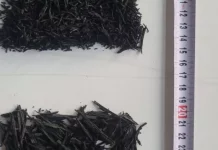HAWAII: Scientists said they have detected in the harshly acidic clouds of Venus a gas called phosphine that indicates microbes may inhabit Earth’s inhospitable neighbour, a tantalising sign of potential life beyond Earth.
The researchers did not discover actual life forms, but noted that on Earth phosphine is produced by bacteria thriving in oxygen-starved environments. The international scientific team first spotted the phosphine using the James Clerk Maxwell Telescope in Hawaii and confirmed it using the Atacama Large Millimetre/submillimetre Array (ALMA) radio telescope in Chile.
“I was very surprised — stunned, in fact,” said astronomer Jane Greaves of Cardiff University in Wales, lead author of the research published in the journal Nature Astronomy.
The existence of extraterrestrial life long has been one of the paramount questions of science. Scientists have used probes and telescopes to seek “biosignatures” — indirect signs of life — on other planets and moons in our solar system and beyond.
“With what we currently know of Venus, the most plausible explanation for phosphine, as fantastical as it might sound, is life,” said Massachusetts Institute of Technology molecular astrophysicist and study co-author Clara Sousa-Silva.
“I should emphasise that life, as an explanation for our discovery, should be, as always, the last resort,” Sousa-Silva added. “This is important because, if it is phosphine, and if it is life, it means that we are not alone. It also means that life itself must be very common, and there must be many other inhabited planets throughout our galaxy.”
Phosphine — a phosphorus atom with three hydrogen atoms attached — is highly toxic to people.
Earth-based telescopes like those used in this research help scientists study the chemistry and other characteristics of celestial objects. Phosphine was seen at 20 parts-per-billion in the Venusian atmosphere, a trace concentration. Greaves said the researchers examined potential non-biological sources such as volcanism, meteorites, lightning and various types of chemical reactions, but none appeared viable. The research continues to either confirm the presence of life or find an alternative explanation. Venus is Earth’s closest planetary neighbour. Similar in structure but slightly smaller than Earth, it is the second planet from the sun. Earth is the third. Venus is wrapped in a thick, toxic atmosphere that traps in heat. Surface temperatures reach a scorching 880 degrees Fahrenheit (471 degrees Celsius), hot enough to melt lead. “I can only speculate on what life might survive on Venus, if indeed it is there. No life would be able to survive on the surface of Venus, because it is completely inhospitable, even for biochemistries completely different from ours,” Sousa-Silva said. “But a long time ago, Venus could have had life on its surface, before a runaway greenhouse effect left the majority of the planet completely uninhabitable.”–Agencies






